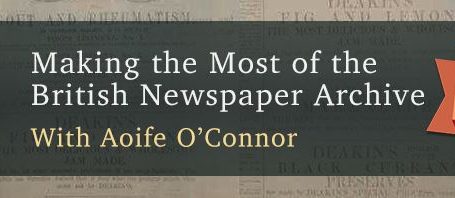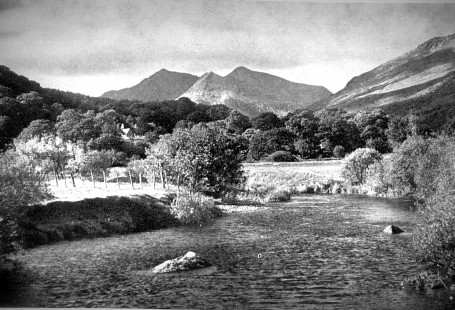The main filming location for hit series and brand new film Downton Abbey, Highclere Castle in Hampshire, holds a fascinating history, as well as its more contemporary cinematic claim to fame.
Using articles found in the British Newspaper Archive, in this blog we explore Highclere Castle – from its building to its famous inhabitants – and discover a history with as much drama as an episode of Downton Abbey.
Architectural Origins
Downton Abbey’s iconic exterior, really that of Highclere Castle, was designed in a Jacobethan style by Houses of Parliament architect Sir Charles Barry during the 1840s. One writer, however, reflecting on the design in the 1880s, was rather critical of lavish façade:
Externally there is little to interest the stranger who surveys the ornate walls and towers of Highclere Castle. It is a modern edifice designed, less than half a century ago, by the elder Barry, to suit the taste, or one might say the whim, of the last Earl. The style, a sort of Italian Gothic, including to floridness, is peculiarly that of the present century.
The Bystander | 3 January 1906
However, the same piece featured in the Reading Mercury speaks much more favourably of the Castle’s grounds, ‘embowered among shady lawns and noble trees…and backed by wood-crowned hills which bound the magnificent expanse of sylvan scenery.’ Kinder words are also to be had regarding the interior, which is possessed of the ‘sumptuous domesticity’ of the ‘early Georgian epoch.’
Some twenty years later, The Sketch gives its own impression of Highclere Castle:
Among the stately homes of England splendid Highclere is justly famed. The great pile of buildings forming an imposing whole is not yet a hundred years old, but, nevertheless, it has a look of ancient splendour.
Highclere as a Hospital
In an article entitled ‘Beautiful Homes and Their Owners’ The Sketch introduces us to Highclere’s owners, Lord and Lady Carnarvon. Lord and Lady Carnarvon are perhaps the most famous inhabitants of Highclere – Lord Carnarvon because of his association with the discovery of Egyptian king Tutankhamen’s tomb, and Lady Carnarvon due to her war work.
Lady Carnarvon | The Sketch | 7 December 1904
Almina, Lady Carnarvon, was half-French by birth and the biological daughter of Alfred de Rothschild. Upon de Rothschild’s death Lady Carnarvon was left part of his fortune, which subsequently would fund her husband’s search for Tutankhamen’s tomb.
On the outbreak of the First World War, Lady Carnarvon converted Highclere Castle into a military hospital, providing care for those wounded on the front. She herself worked as a nurse at Highclere, and when the war was over, she refused a CBE honouring her work.
Lady Carnarvon nursing at Highclere | The Sphere | 14 April 1923
Tutankhamen’s Tomb
After the war Lord Carnarvon, an ardent Egyptologist, traveled to Thebes. There, the ‘lover of art and true virtuoso’ funded archaeologist Howard Carter’s search for Tutankhamen’s elusive tomb.
Months after the discovery of the tomb, Lord Carnarvon suffered a mosquito bite which later became infected, leading eventually to his death, and the beginnings of the infamous rumours surrounding the curse of Tutankhamen.
Lord Carnarvon leaves Tutankhamen’s tomb | The Sphere | 14 April 1923
The Sketch, in a piece entitled ‘The Strange Death of the Earl of Carnarvon,’ describes how the Earl ‘led a very strenuous life at Thebes’ in the heat and the dust of that particular locale, and publishes some wonderful pictures of the Earl at the tomb.
Lord Carnarvon glimpses into the tomb, accompanied by Howard Carter | The Sphere | 14 April 1923
After Egypt – Another Archaeological Discovery
Beyond the glamour of Egypt, in 1954 Highclere Castle was opened to the public for the very first time. According to The Sphere, admission was to be one shilling, with proceeds going to a local charity.
And in the 1990s Highclere Castle was home to its own archaeological investigation. According to the Reading Evening Post, a wall was discovered under a seventeenth century church which was thought to be the remains a palace built for the Bishop of Winchester in the fourteenth century.
Elsewhere, archaeologists discovered ‘remains of prehistoric fields, which could have been farmed from Beacon Hill, an Iron Age hill fort. These fields would have been farmed 2,500 years ago.’
Thankfully, this excavation was not subject to the same sort of curse as that of Tutankhamen’s, and demonstrates the wealth of history to be found at Highclere Castle, a place which has been inhabited for thousands of years, and is likely, thanks in part to Downton Abbey, to stay part of our landscape for years to come.
Want to learn more? Register now and explore the Archive













